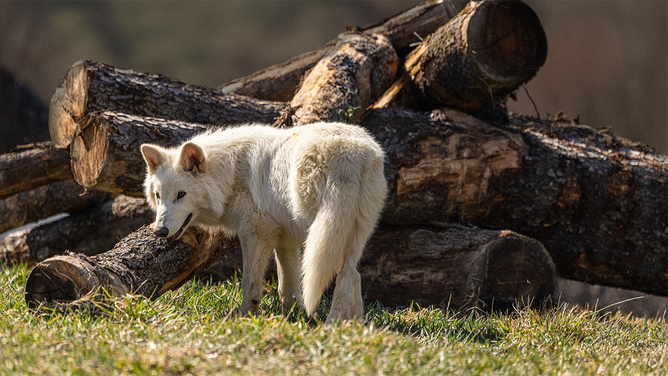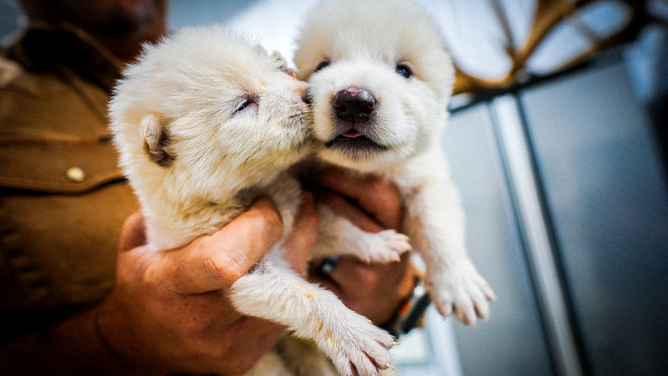The dire wolf – an enormous and legendary predator from the ice age – has been extinct for over 10,000 years now. However, Colossal Biosciences claims they have “revived” the dire wolf using advanced technology.
Is that really true? What did they do? What does this mean for us in the future?
Let’s find out.
What Was the Dire Wolf?
Dire wolf “Canis dirus,” was an even larger and stronger version of the modern day wolf. They inhabited USA and Canada during the ice age period. Bison, horses, and even mammoths were their favorite meals.
Dire wolves were not the ancestors of modern wolves. Thanks to DNA technology, it is possible to confirm that they were a completely different species. However, dire wolves along with all the ice age giant creatures disappeared about 10,000 to 13,000 years ago.
Now scientists are saying that they have discovered new technology that enables them to bring Ice age giant animals back to life.
Also Read: 15 Best profitable business ideas in India for 2025
How Did They Bring the Dire Wolf Back?

Colossal Biosciences used CRISPR gene-editing—a way to rewrite DNA—to rebuild the dire wolf’s genetic code. Here’s how they did it:
- Ancient DNA – Their research began with Ancient DNA. 13000 year old dire wolf fossils were used, which included a tooth and an ear bone. After removing the excruciatingly large dire wolf’s DNA outgrowing it all.
- Gene Editing – They used CRISPR to insert modern wolves and dog genes into the incomplete parts of the DNA.
- Surrogate Moms – Embryos were implanted into domestic dogs who gave birth to the pups.
Meet the First Dire Wolf Pups
In October 2024, the first two pups were born:
- Remus & Romulus (named after the legendary founders of Rome).
- A third pup, Khalessi (a Game of Thrones nod), was born in early 2025.
Now, the pups are healthy and growing fast—already 80 pounds at six months old. Scientists say they’ve even heard the first dire wolf howls in 10,000 years.
The wolves live on a 2,000-acre protected reserve, cared for by experts.
Why Bring Back an Extinct Wolf?
Some people ask: Why do this? Colossal says it’s not just about the dire wolf—it’s about saving endangered species and pushing science forward.
- Science Breakthrough – This was the most complex gene-editing ever done on an animal. The tech could help save species on the brink of extinction (like the red wolf).
- Woolly Mammoth Next? – Colossal’s biggest goal is bringing back the woolly mammoth. The dire wolf project helps test the science.
- Could They Live in the Wild? – Right now, no. These wolves are in a controlled environment. But someday, could they help restore ecosystems? Maybe.
Why Dire Wolf De-Extinction Isn’t Simple
Bringing back an extinct animal is not easy. Here’s why:
- Incomplete DNA – Ancient DNA is damaged and missing pieces. Scientists had to guess some parts using modern wolves.
- Health Risks – The pups seem healthy now, but long-term effects are unknown. Will they have hidden genetic problems?
- Behavior Differences – These wolves are raised by humans. Will they act like real dire wolves? Probably not exactly.
- Ethical Questions – Should we bring back extinct animals just because we can? What if they suffer?
Why Did Dire Wolves Go Extinct?
Scientists aren’t 100% sure, but three big theories exist:
- Climate Change – The Ice Age ended, and their prey (like mammoths) died out. No food = no dire wolves.
- Competition with Gray Wolves – Modern wolves were better adapted and may have outcompeted them.
- Human Hunting – Early humans hunted the same prey, making survival even harder.
Dire Wolf vs. Modern Wolf: Key Differences
| Feature | Dire Wolf | Modern Gray Wolf |
|---|---|---|
| Size | Bigger & heavier (150-200 lbs) | Smaller (80-120 lbs) |
| Bite Force | Stronger (crushed bones easily) | Powerful, but not as extreme |
| Legs | Shorter, stockier (built for strength) | Longer, better for running |
| Habitat | Ice Age forests & grasslands | Forests, tundra, mountains today |
| Social Behavior | Likely pack hunters (like modern wolves) | Highly social, family packs |
Fun Fact: Despite Game of Thrones, dire wolves did NOT live with humans—they went extinct long before dogs were domesticated.
Game of Thrones’ Direwolf: How Real Were They?
In Game of Thrones, the Stark family’s direwolves are huge, loyal, and magical. But how close is that to reality?
1.Big & Powerful – Real dire wolves were massive, just like in the show.
2.Not Pets – They were wild predators, not tame companions.
3.No Magic – Real dire wolves didn’t have supernatural bonds with humans.
4.Pack Hunters – Like modern wolves, they likely hunted in groups.
So, Game of Thrones got some things right—but real dire wolves were much scarier than Ghost or Summer!
What’s Next?
This is just the beginning. Scientists will keep studying the wolves to see:
- Are they truly like the original dire wolves?
- Can they survive long-term?
- Should they ever be released into the wild?
For now, the idea of seeing a real dire wolf—something that once only existed in fossils and fantasy—is mind-blowing.
Would you want to see one in person? Let us know in the comments!
Final Thought:
Science is moving fast. De-extinction sounds like sci-fi, but it might be the future. Whether that’s exciting or scary… well, that’s up to you.
Want more? Follow for updates on de-extinction, mammoths, and more wild science!






Leave a Reply